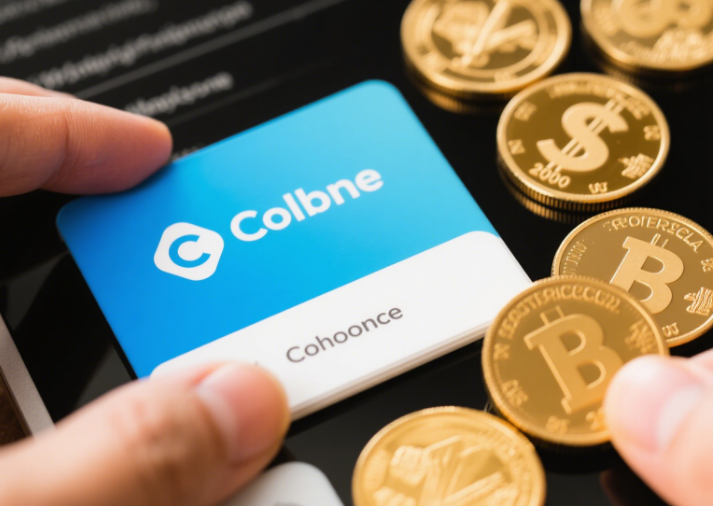Introduction
Coinbase, the world’s leading cryptocurrency exchange, has become synonymous with accessibility, security, and innovation. With over 200 supported cryptocurrencies and millions of users globally, Coinbase has revolutionized how people buy, sell, and store digital assets. In this comprehensive guide, we delve into the intricacies of coins on Coinbase, exploring the listing process, market impact, and strategies to maximize your investment potential. Whether you’re a seasoned trader or a crypto novice, this article equips you with insights to navigate the dynamic world of Coinbase-listed assets.
1. The Coinbase Listing Process: How Cryptocurrencies Make It to the Platform
Coinbase’s stringent listing criteria ensure only high-quality, compliant projects gain access to its platform. Here’s a breakdown of the process:
a. The Digital Asset Support Group (DASG)
Coinbase’s internal team, the Digital Asset Support Group (DASG), evaluates each cryptocurrency based on three core pillars:
- Legal Compliance: Assets must adhere to securities laws and regulatory frameworks, such as the U.S. Howey Test .
- Technical Security: Projects undergo rigorous audits to ensure robust blockchain infrastructure and resistance to hacks.
- Market Demand: Coinbase assesses trading volume, community engagement, and real-world utility .
Approval rates are notoriously low, with 90% of applicants failing to meet standards . For example, in 2025, Coinbase plans to list 50–80 new tokens, including TRX, BNB, and KAS, after extensive due diligence .
b. The Accelerated Listing Strategy
To keep pace with market demand, Coinbase is transitioning from a “whitelist” to a “blacklist” model, allowing faster approvals for assets that meet predefined criteria. This shift, combined with DEX integrations and user feedback mechanisms, aims to reduce listing times by 30% .
2. The Coinbase Effect: Why Listing Catalyzes Price Surges
A Coinbase listing often triggers significant price volatility, driven by increased liquidity and institutional interest. Here’s what you need to know:
a. Historical Performance
- Short-Term Gains: Newly listed coins typically surge 91% within the first week of trading. For instance, $PEPE rose 50% after its 2024 Coinbase debut .
- Long-Term Value: Projects with strong fundamentals, like Solana (SOL) and Cardano (ADA), have sustained growth, with SOL up 300% since its 2020 listing .
b. Market Dynamics
- Liquidity Boost: Coinbase’s deep order books attract retail and institutional investors, reducing slippage and enhancing trading efficiency.
- Regulatory Stamp of Approval: A Coinbase listing signals compliance, reassuring risk-averse investors .

3. Key Coins on Coinbase in 2025: Trends and Analysis
As Coinbase expands its offerings, several tokens stand out for their potential:
a. High-Impact Listings
- TRX (Tron): A top-10 cryptocurrency by market cap, TRX’s integration with Coinbase could drive adoption in decentralized finance (DeFi) .
- BNB (Binance Coin): Despite regulatory scrutiny, BNB’s utility in Binance’s ecosystem makes it a strategic addition for Coinbase users .
- KAS (Kaspa): Focused on scalability, KAS aims to solve blockchain transaction bottlenecks, aligning with Coinbase’s emphasis on innovation .
b. Emerging Trends
- RWA Tokens: Assets like OM (Mantra) represent real-world assets (RWA) tokenization, a sector projected to reach $1 trillion by 2030 .
- Meme Coins: While speculative, tokens like $HYPE leverage viral communities to attract retail investors .
4. Investing in Coinbase Coins: Strategies for Success
Maximize your returns by adopting these proven strategies:
a. Fundamental Analysis
- Team and Vision: Evaluate the project’s leadership and roadmap. For example, Ethereum’s transition to proof-of-stake solidified its dominance .
- Use Case: Prioritize coins with real-world applications, such as USDC for stablecoin transactions .
b. Technical Analysis
- Volume and Price Action: Monitor trading volume spikes and support/resistance levels. Tools like Coinbase Advanced Trading offer advanced charting .
- Market Sentiment: Leverage social media and forums to gauge community enthusiasm.
c. Risk Management
- Diversification: Spread your portfolio across top coins (e.g., BTC, ETH) and emerging assets to mitigate risk.
- Stop-Loss Orders: Set automated sell orders to protect against sudden downturns.
5. Regulatory Landscape: How SEC Changes Impact Coinbase Listings
The U.S. Securities and Exchange Commission (SEC) plays a pivotal role in Coinbase’s listing decisions. Recent developments include:
- SEC Withdrawal of Lawsuits: In 2025, the SEC dropped charges against Coinbase, signaling a shift toward clearer regulations .
- Stablecoin and ETF Approvals: SEC’s green light for Bitcoin and Ethereum ETFs has increased institutional participation .
6. Coinbase vs. Competitors: What Sets It Apart
Coinbase’s edge lies in its user-friendly interface, institutional-grade security, and regulatory compliance. While exchanges like Binance offer more coins, Coinbase’s focus on transparency and trust attracts risk-averse investors.
Conclusion
Coinbase’s curated list of cryptocurrencies provides a gateway to the crypto economy, blending innovation with security. By understanding the listing process, market trends, and investment strategies, you can harness the power of Coinbase to grow your portfolio. Stay informed, diversify wisely, and leverage Coinbase’s tools to navigate the ever-evolving crypto landscape.
Stay ahead with Bitora’s insights into Coinbase listings and crypto markets.









Leave A Reply